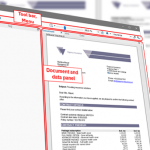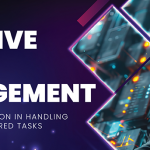Accelerating Digital Transformation
“If it ain’t broke, don’t fix it” may have been a viable approach in past times. But not now.
COVID-19 has fundamentally shaken up the world and business landscape, forcing massive change and transformation across all industries and sectors. And for all the uncertainty about what the future will look like, it’s clear already that it will be digital.
Prior to the pandemic many companies have been gradually moving towards digitalization, but they were at different stages of the digital transformation journey. The pandemic has highlighted where they lag in terms of transformation, and has shown gaps and inefficiencies in the organization and infrastructure that have prevented many from performing most critical business activities.
One of the lessons learned so far is that those who were ahead on the digital curve at the time of the pandemic outbreak have managed to move at speed and get back on their feet better.
Just think of Customer Contact and Service Centers facing huge spikes in voice calls, while at the same time moving hundreds of thousands of agents home. Only digitally advanced businesses have been able to quickly expand the service with Chatbots and open asynchronous messaging channels, such as Facebook Messenger, WhatsApp and Apple Business Chat, for customer service.
Or consider the enormous growth in customer requests, claims and deferrals of loans, healthcare services or applications for financial help – most of which were not available online.
Switching to home work overnight has raised many issues – from security to staying connected to having all the necessary infrastructure in place so everyone is able to work from home, and it also brought a number of critical day-to-day operations to a standstill. With staff at home and files in the office, processes based on the general assumption that workers and files were in the same place were no longer feasible and simply broke down.
The crisis has forced organizations to rapidly adapt to new realities, opening everyone’s eyes to new ways of working within the company as well as with customers and suppliers. Since the pandemic outbreak, many organizations have accelerated their shift toward digital-first models – at warp speed.
By now, most companies digitized at least some part of the business. They transitioned to remote sales and service teams and launched digital outreach to customers, catching up with the pandemic’s impacts. The recent insights show that the world made a multi-year leap in business digital adoption in a matter of weeks.
Currently, organizations are shifting from temporary fixes to strengthening and stabilizing operations and weeding out weaknesses that are slowing them down in securing business continuity. They are refocusing and accelerating digital investments, selectively modernizing technology capabilities and deploying new models that leverage agile and remote, making sure that when the crisis ends, they’ll be stronger than they are today.
The optimization phase is all about building on lessons learned and increasing and scaling digital capabilities. We see a lot of effort in breaking out from inefficient communication systems, in consolidation and enterprise-wide harmonization, as well as in business process automation and launching new digital offerings or channels for fast returns.
Digital undoubtedly plays a central role in this. Despite the immense challenges that companies are managing today, now is the time to act. Leaders who want to succeed in the digital-led recovery must reset their business agendas to stabilize organizations with the right mix of digital and traditional business and equip them with processes, technology and tools to operate at the highest effective speed and fast track their business recovery.
Discover how to span print and digital and enable effortless customer interactions via any channel.
See how to quickly provide self-service and guide customers through forms and complex processes.
Learn how to handle any customer request – from the request to delivery.
See how to remove channel silos and unify communication channels, customer touch points, events, data and processes for your Customer Contact and Service Center teams.
Learn how to build an adaptive workforce equipped with the skills, processes, information and autonomy to respond flexibly to new disruptions.
Senior Manager Brand Marketing
Vienna, Austria






